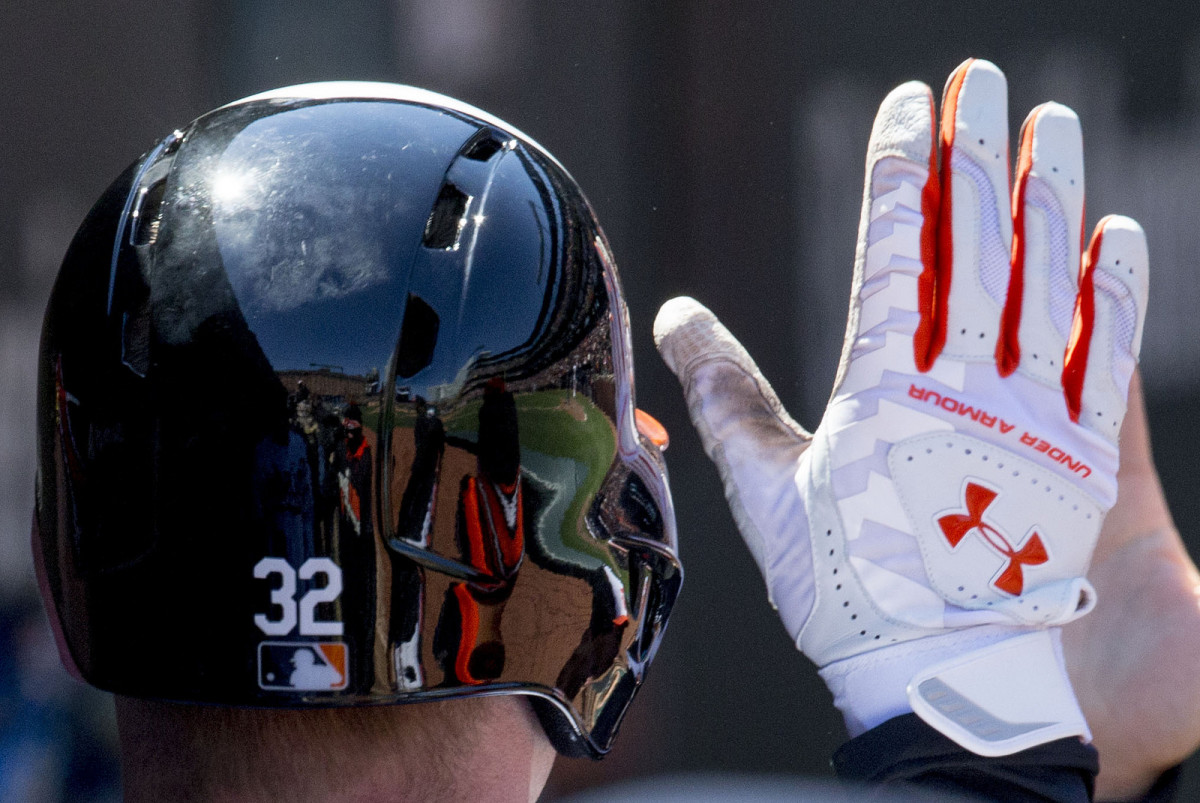Under Armour has the kind of origin story that MBA students and would-be startup founders dream of.
Almost 20 years ago, Kevin Plank turned a problem into a company. While playing football at the University of Maryland, Plank was sick of changing out of sweaty T-shirts worn under his jersey. The frustration inspired him to create T-shirts using moisture-wicking synthetic fabric that would cut down on the sweat factor.
The product became a business — originally run out of his grandmother’s basement — and the business is now a global empire with thousands of employees.
As the company has experienced staggering growth, business and innovation leaders say Baltimore, its longtime headquarters, has also morphed and evolved, with some credit going to Under Armour itself.
But the question remains: Just what impact has the company had on Charm City and its business sector?
###
Rob Rosenbaum, president and executive director of TEDCO, characterizes the innovation community as noticeably stronger than it was even two or three years ago. It’s early yet, but what’s working in Baltimore’s favor is more resources going toward startups and emerging businesses, including new incubators, local foundations and state programs like his.
A major contributing force is new companies that have made it, Rosenbaum says. That’s where Under Armour comes in.
“Other companies see that a single entrepreneur built a business into a global powerhouse,” he says. “People look around and like to follow and see examples. Under Armour happens to be a spectacular one.”
In that sense, its place in the ecosystem is almost as an unofficial mentor, a success story that keeps companies starting and going, he said.
Deb Tillett, president of the Emerging Technology Centers, also places stock in this notion of Under Armour as an aspirational force for companies, especially in their earlier stages.
In some cases, companies in the ETC have met with Under Armour executives to seek input and to try to partner, Tillett says.
She mentions Zappos CEO Tony Hsieh talking about the concept of creative collisions, in which peers have serendipitous encounters that spur collaboration. And Baltimore epitomizes this.
“We’re big enough and important enough (to have successful entrepreneurs) yet small enough that some people can actually get to a Kevin Plank; they’re one degree of separation from him,” Tillett said. “Others see a successful company that started in the same way they did — ‘I have a cool idea. I wonder what I can do with it’ — and they want to be around it.”
In Rosenbaum’s estimation, Baltimore startups currently tend to fall into one of four categories:
- Healthcare
- Medical devices/health IT
- Cybersecurity
- Edtech
In some ways, it’s an outgrowth of the established institutions that fill the city.
Over the years Under Armour has expanded the scope of its product offerings and purchased a number of smaller companies, most recently moving aggressively into wearable technology. Samsung is reportedly looking to team up with Under Armour and has been in recent talks with the company. Meanwhile, Under Armour acquired app-maker MapMyFitness last year.
To TEDCO’s Rosenbaum, this shift could result in more of a wearable technology bent to the Baltimore startup ecosystem. He cautions, though, that the wearable market is still shaking out.
“Wearables may well become a bigger part (of the startup mix),” he says. “But it’s still a very new segment. A year ago nobody had smart watches or Fitbits, so we’ll see.”
What wearables represent to Tillett is a part of the greater phenomenon of big data, which is the direction every company is moving. Better monitoring of data will be disruptive and game-changing, especially for education and healthcare companies, she says. And Under Armour’s focus on wearable technology is pointing to this trend.
“The underpinnings of everything is data — capturing it and making it visible — whether you’re talking about actual wearables,” she said.
###
Gregory Sileo, president of the Locust Point Civic Association, in which Under Armour’s headquarters reside, says the company is a frequent topic of conversation. As Under Armour expands, neighbors hope to protect the feel of the community. The general consensus is that Under Armour has brought jobs, skilled workers and increased opportunities to the area — and to Baltimore overall.
“They’re employing people who aren’t just working in this local area but becoming true locals,” Sileo said. “The company is very proud to be a member of our community. They’ve been very clear about that and have really taken part in corporate giving.”
In terms of the business ecosystem overall, Sileo sees positives in companies emulating Under Armour’s global mindset — and not settling for just doing business in Baltimore.
“You can’t get around the fact that a company like this, growing on the international scale, it is a good thing,” he said. “It’s just a matter of ensuring that the growth happens in a manageable way.”
Join the conversation!
Find news, events, jobs and people who share your interests on Technical.ly's open community Slack

Baltimore daily roundup: An HBCU innovation champion's journey; Sen. Sanders visits Morgan State; Humane Ai review debate

Baltimore daily roundup: Medtech made in Baltimore; Sen. Sanders visits Morgan State; Humane Ai review debate

Baltimore daily roundup: The city's new esports lab; a conference in Wilmington; GBC reports $4B of economic activity

